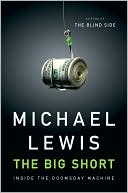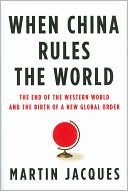China's Megatrends: The 8 Pillars of a New Society
A groundbreaking look at a new social-political model on the rise\ \ John and Doris Naisbitt, longtime China observers, provide an in-depth study of the fundamental changes in China's social, political, and economic life, and their impact on the West.\ With extraordinary access, and using the same techniques behind John Naisbitt's international bestseller Megatrends, the Naisbitts have traveled the country, interviewing journalists, entrepreneurs, academics, politicians, artists, dissidents,...
Search in google:
A groundbreaking look at a new social-political model on the rise John and Doris Naisbitt, longtime China observers, provide an in-depth study of the fundamental changes in China's social, political, and economic life, and their impact on the West. With extraordinary access, and using the same techniques behind John Naisbitt's international bestseller Megatrends, the Naisbitts have traveled the country, interviewing journalists, entrepreneurs, academics, politicians, artists, dissidents, and expatriates. With the help of twenty-eight staff members of the Naisbitt China Institute in Tianjin, they have monitored local newspapers in all of China's provinces to identify the evolving perspectives and deep forces underlying China's transformation. Their research reveals that China is not only undergoing fundamental changes but also creating an entirely new social and economic model—what the Naisbitts call a "vertical democracy"—that is changing the rules of global trade and challenging Western democracy as the only acceptable form of governing. The Naisbitts have identified 8 pillars as the foundation and drivers of China's new society: Emancipation of the Mind Balancing Top-Down and Bottom-Up Framing the Forest and Letting the Trees Grow Crossing the River by Feeling the Stones Artistic and Intellectual Ferment Joining the World Freedom and Fairness From Olympic Medals to Nobel Prizes Examining each of these 8 pillars in great detail, China's Megatrends describes the new China for the knowledgeable and the newly curious, offering fresh and provocative insights and lessons to be learned. Publishers Weekly Naisbitt, author of the 1982 bestseller Megatrends—an analysis of the economic, political, social and cultural transition taking place in the U.S.—collaborates with his wife and turns his focus to our competitor to the east. Why, the authors ask, has “autocratic” China succeeded while many democratically governed states have failed to make economic progress? He tells a compelling story of a country that is maturing in hyperdrive and can concentrate on economics partially because it isn't distracted by election cycles and national soul searching. The book runs down the eight “pillars” of a new society, the strategic moves that have maneuvered China forward, and examines Chinese values, artistic and intellectual ferment, freedom and fairness, media and the swift changes that have brought a country in which wealth was unthinkable and education derided into a place that values entrepreneurism and boasts a business school enrollment comparable to middle-income countries. A thoughtful, ambitious overview sure to be of interest to all those curious about world economics. (Jan.)
\ Raymond Zhou"The best explanation to date of the hows and whys of China’s rapid rise."\ \ \ \ \ Publishers WeeklyNaisbitt, author of the 1982 bestseller Megatrends—an analysis of the economic, political, social and cultural transition taking place in the U.S.—collaborates with his wife and turns his focus to our competitor to the east. Why, the authors ask, has “autocratic” China succeeded while many democratically governed states have failed to make economic progress? He tells a compelling story of a country that is maturing in hyperdrive and can concentrate on economics partially because it isn't distracted by election cycles and national soul searching. The book runs down the eight “pillars” of a new society, the strategic moves that have maneuvered China forward, and examines Chinese values, artistic and intellectual ferment, freedom and fairness, media and the swift changes that have brought a country in which wealth was unthinkable and education derided into a place that values entrepreneurism and boasts a business school enrollment comparable to middle-income countries. A thoughtful, ambitious overview sure to be of interest to all those curious about world economics. (Jan.)\ \ \ Kirkus ReviewsAn analysis of economic, social and political patterns that attempts to explain the Chinese economic miracle. John Naisbitt-who wrote the megaselling Megatrends: Ten New Directions Transforming Our Lives (1982) and teaches economics at Nankai University and Tianjin University-founded the Naisbitt China Institute with his wife, Doris. Here they examine "China as the Chinese look at their country . . . [to be] open to its shortcomings, but . . . not judge China by our own values and standards. The authors underscore that the Chinese do not like to be lectured at, but rather learn (or copy) from the West and do it their own way. They compare China's economic success since Deng Xiaoping's loosening of the centralized hinges in 1978 to the stirring of a massive, amorphous, slumbering, almost-obsolete company that is finally injected with new ideas, leadership trust and vision. The eight "pillars" on which the "new Chinese system rests" include Deng's "emancipation of the mind," which allowed people to break from the strictures of the Cultural Revolution and return to cities, jobs, businesses, schools and individual pursuits; the Chinese "vertical" system of governance, an effective "top-down, bottom-up" structure that keeps the country's social order in line while still stimulating reforms; new paradigms that encourage "a variety of trees to grow" in terms of political, military, economic and cultural frames; bad business being rejected in favor of good; the nurturing of an artistic and intellectual renaissance; an increased role in the global community; implementation of basic living standards for all; and resisting "hierarchical, authoritarian thinking" in favor of embracing competitivenessand innovation. In conclusion, the Naisbitts weigh in on "matters in dispute," such as the "three forbidden T's: Tibet, Taiwan, and Tiananmen Square."An intriguing look at the new China. Agent: Jim Levine/Levine Greenberg Literary Agency\ \ \ \ \ From the Publisher"An intriguing look at the new China." —-Kirkus\ \








